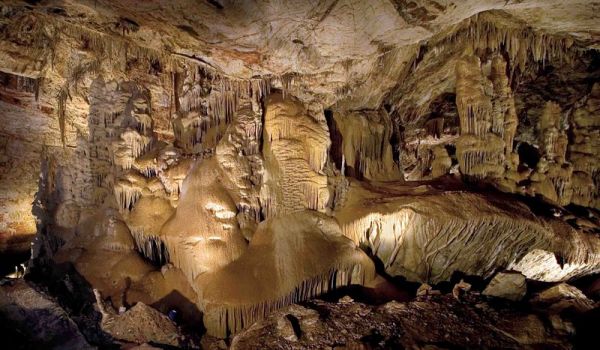
Here’s
the story of how two ordinary guys discovered an extraordinary cave
and, vowing to protect it, kept it a secret for 14 years.
THE SCENE One Saturday in 1974, two young men affiliated with Southern Arizona Grotto, a spelunking, or “caving,” group based in Tuscon, Arizona, were out exploring, looking for new caves near the Whetsone Mountains. Randy Tufts and Gary Tenen traveled about an hour outside of Tucson, where they were roommates at the University of Arizona. As they often did, Tufts and Tenen carried only the minimum amount of caving equipment they needed: two miners’ hard hats with gas carbine lanterns affixed to the top, some rope, hammers and chisels, and snacks.
Tufts had been introduced to spelunking by an uncle, and on this day he wanted to explore an area he’d first seen seven years earlier, when he was still in high school. He recalled a large sinkhole with a narrow crack descending into bedrock. On a recent walk, he’d rediscovered the sinkhole and also noticed that the U-shaped hill next to the sinkhole had what appeared to be a collapsed cave entrance. He wondered whether there was something interesting under the hill.
THE DISCOVERY
Tufts and Tenen found the spot and lowered themselves into the 15-foot-deep sinkhole, a dry and dusty space with a skull and crossbones carved in one wall. They found footprints, a couple of broken stalactites (mineral formations, or “dripstones,” that hang like icicles from the ceiling of a cave), and a 10-inch-wide crack. But most important, they noticed a breeze moving through the crack— a moist, warm breeze that carried the smell of bats, a sure sign of an interesting cave.

No comments:
Post a Comment